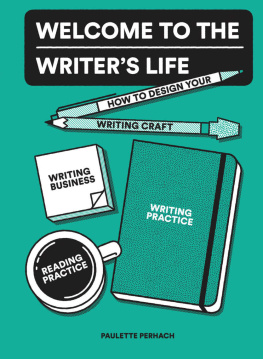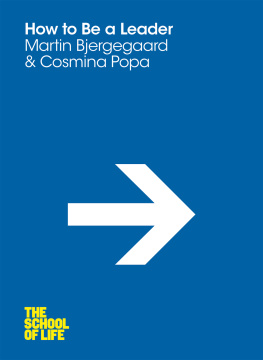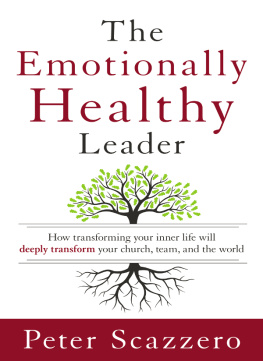Leader - On Life-Writing
Here you can read online Leader - On Life-Writing full text of the book (entire story) in english for free. Download pdf and epub, get meaning, cover and reviews about this ebook. City: Oxford, year: 2015, publisher: Oxford University Press, genre: Detective and thriller. Description of the work, (preface) as well as reviews are available. Best literature library LitArk.com created for fans of good reading and offers a wide selection of genres:
Romance novel
Science fiction
Adventure
Detective
Science
History
Home and family
Prose
Art
Politics
Computer
Non-fiction
Religion
Business
Children
Humor
Choose a favorite category and find really read worthwhile books. Enjoy immersion in the world of imagination, feel the emotions of the characters or learn something new for yourself, make an fascinating discovery.
- Book:On Life-Writing
- Author:
- Publisher:Oxford University Press
- Genre:
- Year:2015
- City:Oxford
- Rating:3 / 5
- Favourites:Add to favourites
- Your mark:
- 60
- 1
- 2
- 3
- 4
- 5
On Life-Writing: summary, description and annotation
We offer to read an annotation, description, summary or preface (depends on what the author of the book "On Life-Writing" wrote himself). If you haven't found the necessary information about the book — write in the comments, we will try to find it.
Leader: author's other books
Who wrote On Life-Writing? Find out the surname, the name of the author of the book and a list of all author's works by series.
On Life-Writing — read online for free the complete book (whole text) full work
Below is the text of the book, divided by pages. System saving the place of the last page read, allows you to conveniently read the book "On Life-Writing" online for free, without having to search again every time where you left off. Put a bookmark, and you can go to the page where you finished reading at any time.
Font size:
Interval:
Bookmark:


Great Clarendon Street, Oxford, OX2 6DP, United Kingdom
Oxford University Press is a department of the University of Oxford. It furthers the University's objective of excellence in research, scholarship, and education by publishing worldwide. Oxford is a registered trade mark of Oxford University Press in the UK and in certain other countries
the various contributors 2015

Some parts of this publication are available online as open access. Chapter 12 is distributed under the terms of a Creative Commons Attribution-NonCommercial-NoDerivatives 4.0 International licence (CC BY-NC-ND), a copy of which is available at http://creativecommons.org/licenses/by-nc-nd/4.0/. Enquiries concerning use outside the scope of the licence terms should be sent to the Rights Department, Oxford University Press, at the above address.
The moral rights of the author have been asserted
First Edition published in 2015
Impression: 1
All rights reserved. No part of this publication may be reproduced, stored in a retrieval system, or transmitted, in any form or by any means, without the prior permission in writing of Oxford University Press, or as expressly permitted by law, by licence or under terms agreed with the appropriate reprographics rights organization. Enquiries concerning reproduction outside the scope of the above should be sent to the Rights Department, Oxford University Press, at the address above
You must not circulate this work in any other form and you must impose this same condition on any acquirer
Published in the United States of America by Oxford University Press 198 Madison Avenue, New York, NY 10016, United States of America
British Library Cataloguing in Publication Data
Data available
Library of Congress Control Number: 2015938206
ISBN 9780198704065
ebook ISBN 9780191081361
Printed and bound by CPI Group (UK) Ltd, Croydon, CR0 4YY
Links to third party websites are provided by Oxford in good faith and for information only. Oxford disclaims any responsibility for the materials contained in any third party website referenced in this work.
I am grateful to Jacqueline Baker, Lucy McClune, Rachel Platt, Rachael Nixon, Lydia Shinoj, Hayley Buckley, and Elizabeth Stone, of Oxford University Press and SPi Global for their support throughout. Thanks also to Douglas Matthews who compiled the index, and to Robert C. Ritchie, Steve Hindle, Carolyn Powell, and Juan Gomez of the Huntington Library, San Marino, California, for hosting the conference out of which the book grew. In addition, I am indebted to Catherine Wells-Cole, Jane McVeigh, and Lindsay Duguid, for advice and assistance.
Although every effort has been made to trace and contact copyright holders prior to publication this has not been possible in every case. If notified, the publisher will be pleased to rectify any omissions at the earliest opportunity.
ZACHARY LEADER
JAMES SHAPIRO
MICHAEL DOBSON
WILLIAM ST CLAIR
ALISON BOOTH
ADAM FOULDS
JANIS FREEDMAN BELLOW
HERMIONE LEE
KAREN A. WINSTEAD
ALAN STEWART
JOYCE E. CHAPLIN
BLAKE MORRISON
J. DAVID VELLEMAN
PATRICK HAYES
LAURA MARCUS
GALEN STRAWSON
Life-writing is a generic term used to describe a range of writings about lives or parts of lives, or which provide materials out of which lives or parts of lives are composed. These writings include not only memoir, autobiography, biography, diaries, autobiographical fiction, and biographical fiction, but also letters, writs, wills, written anecdotes, depositions, court proceedings (narratio first existed not as a literary but as a legal term), marginalia, nonce writings, lyric poems, scientific and historical writings, and digital forms (including blogs, tweets, Facebook entries). The term itself is often traced to Virginia Woolf, who first used it in A Sketch of the Past (1939), in connection with the difficulties and inadequacies of conventional biography, a word which itself literally means life-writing. The two halves of the word derive from medieval Greek: bios, life, and graphia, writing.
Some writers on life-writing distinguish between shorter forms, conceived of as source material, and life-writing proper or extended life narratives or formal biography and autobiography; others distinguish between life-writing that is exemplary or formulaic, often associated with older periods, and the sort that seems or seeks to express more modern qualities: authenticity, sincerity, interiority, individuality. At least since the 1970s, theoreticians and historians of life-writing commonly fuse or meld sub-genres, as in the neologisms auto/biography, biofiction, biografiction, autonarration, and autobiografiction (this last, surprisingly, the most venerable as well as the most ungainly of coinages, having first appeared in print in 1906). The blurring of distinctions may help to account for life-writings growing acceptance as a field of academic study, reflecting a wider distrust of fixed forms, simple or single truths or meanings, narrative transparency, objectivity, literature as opposed to writing.
This volume offers a sampling of approaches to the study of life-writing, introducing readers to the range of forms the term encompasses, their changing fortunes and features, the notions of life, self, and story which help to explain these changing fortunes and features, recent attempts to group forms, the permeability of the boundaries between forms, the moral problems raised by life-writing in all forms, but particularly in fictional forms, and the relations between life-writing and history, psychoanalysis, and philosophy. The chapters mostly select individual instances rather than survey historical, theoretical, or generic fields; generalizations are grounded in particulars. For example, the role of the life-changing encounter, a frequent trope in literary life-writing, is considered by Hermione Lee through a handful of examples, notably a much-storied meeting between the philosopher Isaiah Berlin and the Russian poet Anna Akhmatova; James Shapiro examines the history of the cradle to grave life-narrative, as well as the potential distortions it breeds, by using the example of Shakespeare biography, in particular its attempts to explain the playwrights so-called lost years (roughly, between the ages of nineteen and twenty-nine), about which we know nothing; J. David Velleman, a philosopher, draws on the memoir, After Long Silence (1999), by Helen Fremont, as a means of examining the moral grounds for revealing repressed material as well as the respect repression at times deserves; Adam Foulds, the author of The Quickening Maze (2009), a novel that brings Tennyson and John Clare together, disarmingly defends the fictional depiction of historical figures by invoking the good faith of the writer, the good sense of the reader, and the great pleasure afforded by the physical embodiment of people we know to have actually lived (, page 290). Fleshly details bring alive Tolstoys Napoleon and Saul Bellows Ravelstein, a fictional portrait of the political philosopher Allan Bloom, and illustrate aspects of their characters.
The first half of the volume concerns itself with writing about the lives of others; the second half gives priority to writing about the self. That the distinction between self and other is not always clear is suggested throughout the volume, nowhere more so than in the chapters by Janis Freedman Bellow, Hermione Lee, and Karen A. Winstead, which could be thought of as forming a pivot or hinge between the two halves. Janis Freedman Bellow writes as the living model of a fictional character, Rosamund, in
Font size:
Interval:
Bookmark:
Similar books «On Life-Writing»
Look at similar books to On Life-Writing. We have selected literature similar in name and meaning in the hope of providing readers with more options to find new, interesting, not yet read works.
Discussion, reviews of the book On Life-Writing and just readers' own opinions. Leave your comments, write what you think about the work, its meaning or the main characters. Specify what exactly you liked and what you didn't like, and why you think so.

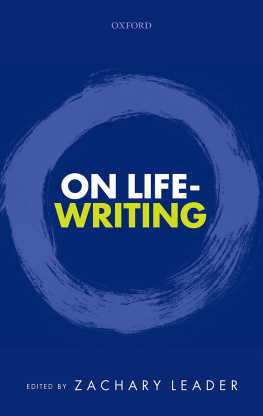
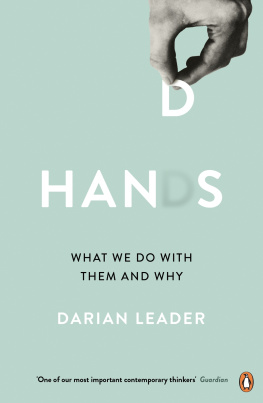

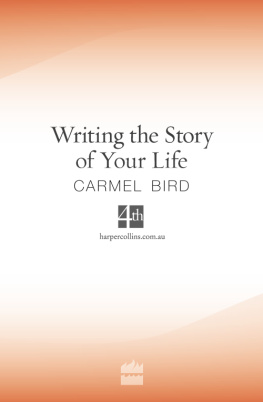

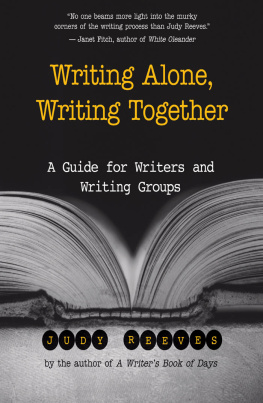
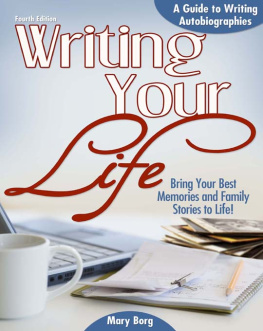
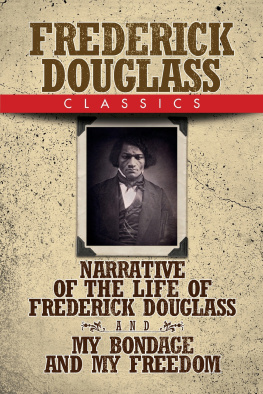
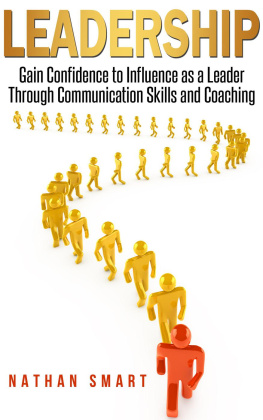
![Whitaker Nathan - The mentor leader: [secrets to building people and teams that win consistently]](/uploads/posts/book/228009/thumbs/whitaker-nathan-the-mentor-leader-secrets-to.jpg)
